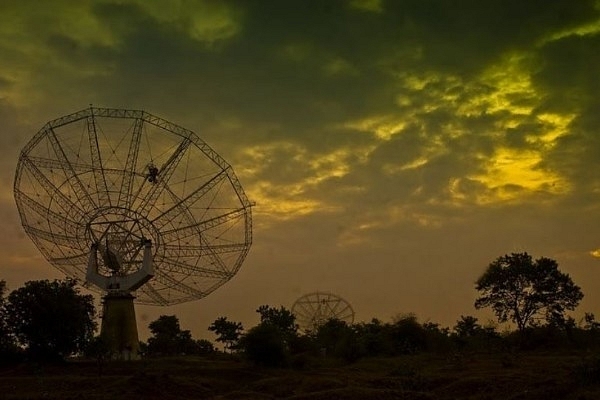
Pune-Based Giant Meter-Wave Radio Telescope Aids Discovery Of Most Distant Radio Galaxy
An international team of astronomers have discovered the most distant radio galaxy using the Giant Meter-wave Radio Telescope (GMRT) in Khodad, near Pune, Phys.org has reported. GMRT is an array of thirty fully steerable parabolic radio telescopes of 45 m diameter. It is operated by National Centre For Radio Astrophysics (NCRA), an arm of the Tata Institute of Fundamental Research (TIFR).
The team of scientists who discovered the galaxy were from India, Netherlands, Brazil, Italy and United Kingdom. The team was led by PhD student Aayush Saxena of Leiden Observatory, the Netherlands. Saxena has completed his BSc Physics from the University of Delhi and his MSc Astrophysics from the University College London.
Located 12 billion light years away, the radio galaxy has been named TGSS J1530+1049. The outcome of the study was accepted for publication in the Monthly Notices of the Royal Astronomical Society.
Radio galaxies are rare entities in the universe which help in understanding of early phases of the universe. They have a supermassive black hole at their centre. The activity in a radio galaxy leads to emission of high energy jet streams which are capable of accelerating charged particles around the supermassive black hole at the speed of light.
"Bright radio galaxies harbor supermassive black holes. It is amazing to find such objects as early in the history of the universe; the time for these supermassive black holes to form and grow must have been very short," co-author of the study Huub Röttgering told Phys.org.